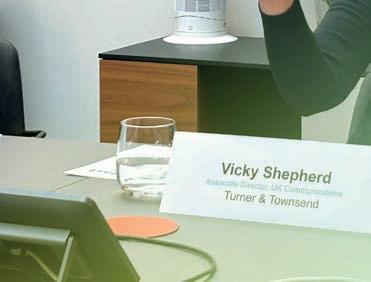






























There’s been a lot of emphasis on how AI can speed up tasks, but to what end? We must approach new tools with an eye on ambition, not admin.
In our discussion we looked at how we take advantage of that gift of time – and how it can help communications teams to do things which, until now, just weren’t possible, whether due to capacity, budget or training.
Examples included analysing complex policy areas or getting to grips with big datasets: tasks that could have been dismissed as needing too much resource in the past, but which can now be done in minutes. These are things that bring strategic heft to our discipline – and get the attention of leadership teams.
The insight AI can give us can ultimately help us to do our jobs better, being creative, rounding out our skills and thinking bigger.
We need to take control and responsibility for AI-written content.
The potential risks of using large language models are well known, from hallucinations to bias and blandness. It’s not good enough to simply say ‘the AI did it’ and there have already been headlines about firms who failed to properly interrogate AI-supported content, with serious financial and reputational consequences.
Communicators cannot take AI’s output at face value. We have to test, challenge and indeed teach. One guest at our breakfast talked about ‘telling o ’ AI to help her get what she needed from it. Good prompts are key – know what you want a tool to deliver and invest the time to refine its responses. AI generated content is only as good as the person asking for it; after all, everything it knows, it’s learnt from us.
Communications teams have a fundamental role in shaping an organisation’s use of AI: guiding policy and training, and coaching others to use it wisely and well. AI has democratised content creation; everyone can ‘write’ a blog at the press of button. On the one hand that’s exciting, but it carries risks too. Just as we advise colleagues on using social media in the right way, for example, to help build and protect brands, we need to do the same for AI.
There is data protection to consider of course, discouraging teams from feeding in confidential information. There’s also the danger of content churn. We need to avoid flooding the marketplace with generic content which either gets ignored by audiences or worse, actively turns them o .
This comes down to working with colleagues to get the best result. We need them to come to us with an idea and an objective – not a piece of copy for review. We can then work with them to meet the brief.
The fundamentals of good, strategic communications haven’t changed, but in an AI world we must be even more clear-eyed about the purpose of activity. AI is a tool like any other and to get the best results from it, we have to know what we want to achieve.
One academic has described large language models as ‘parrots’: you can teach them to put words together in very convincing patterns but they don’t know why these particular words matter. That continues to rely on the direction of comms teams and their ability to set the strategy: the brand voice, the messaging, the story and sentiment that has to land with audiences to get the desired outcome. Getting these essential pillars in place needs to be top of the to-do list.
AI is changing audience behaviour too, of course, as it reshapes how and where people find information.
We need to give organisations confidence that the communications strategy is match fit to respond to these trends. None of this should be alarming, because it’s always been our job to adapt and stay ahead of change. So, embrace the AI revolution, anticipate the risks but don’t panic – the expertise and guidance of great communications teams is more important than ever.